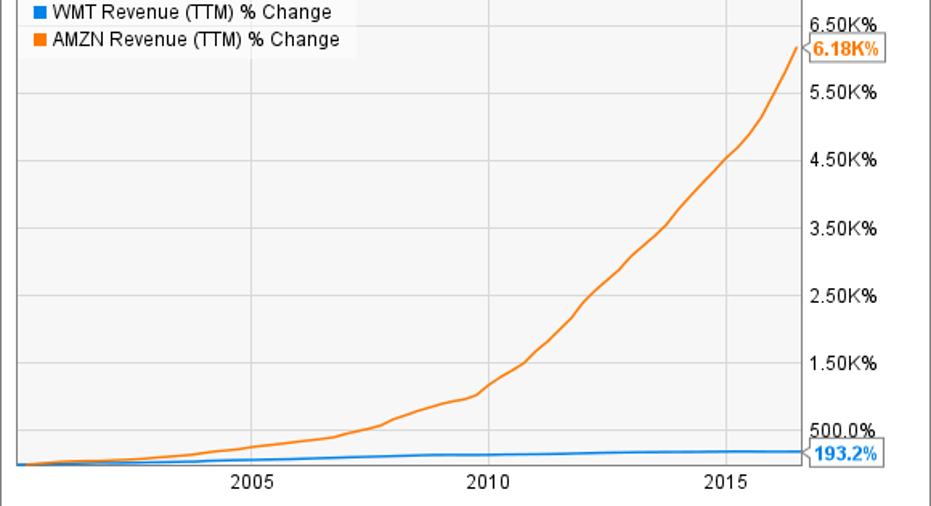2 Stocks that Turned $1,000 Into Millions

$1,000 might not seem like enough money to invest in the stock market. But in a previous article, I noted that well-timed investments of $1,000 in Apple or Amazon (NASDAQ: AMZN) would each be worth about half a million dollars now. Today, I'll go a step further and discuss two stocks that turned $1,000 into several million dollars over several decades.
Disney
Disney (NYSE: DIS) went public in 1957 at$13.88 per share. $1,000 would have been enough to buy 72 shares. After six splits, you would have 27,648 shares today, which would be worth $2.55 million at today's prices. That massive stake would also be paying out $39,260 in dividends every year.
Image source: Pixabay.
Granted, $1,000 in 1957 is equivalent to about $8,500 in today's dollars. Nonetheless, an $8,500 investment that blossoms into a $2.55 million one reveals the market-crushing potential of investing in well-run companies over the long term.
It also demonstrates the value of patience. In the 1960s and 1970s, Disney was one of the "Nifty 50" stocks which were considered solid "buy and hold" investments and fueled the bull market in the early 1970s. But when the bear market hit later that decade, Disney and the rest of the Nifty 50 were aggressively sold off. The House of Mouse then languished foryears as theme park attendance waned and the company's family friendly movies saw big box office declines.
Disney only recovered after Michael Eisner, the former CEO of Paramount, took over as CEO and had the company acquire Touchstone Pictures, Capital Cities ABC, ESPN, and other higher-growth media properties to become a media powerhouse. Eisner also oversaw the "Disney Renaissance" between 1989 and1999, which saw the House Of Mouse release hit animated films like The Little Mermaid, Beauty and the Beast, Aladdin, and The Lion King. Eisner's successor, Bob Iger, further expanded Disney's media empire with the acquisitions of Pixar, Marvel, and Lucasfilm.
Today, Disney faces fresh headwinds, with cord cutters threatening to derail its cable TV business. But Disney continues evolving to face these challenges with new streaming platforms and investments in "new media" companies -- indicating that it could still have room to run.
Wal-Mart
Wal-Mart (NYSE: WMT) went public at $16.50 per share in1970. $1,000, or $6,500 in today's dollars, would have been enough to buy 60 shares. After splitting 11 times, those shares would have multiplied to 122,880 shares -- which would be worth $8.82 million today. You would also be receiving $245,760 in dividends per year.
Image source: Wal-Mart.
Like Disney, Wal-Mart was a member of the Nifty 50 that initially soared but faced tough challenges during the bear market of the mid-1970s. But as Wal-Mart spread across America and other countries with its superstore format, it drove smaller competitors out of business with economies of scale. As a result, its annual revenues rose from $1.3 billion in1980 to $165 billion in2000.
Wal-Mart didn't face any significant challenges until Amazonevolved from an online bookseller into an online superstore in the late 1990s. The company failed to keep up in online sales, and its sales growth fell far behind Amazon's.
Source:YCharts
Amazon aggressively expanded its ecosystem with Amazon Prime, new services like grocery and food deliveries, and (soon) drone deliveries. Wal-Mart fought back by matching Amazon's prices, launching its own subscription-based delivery service, and expanding its digital ecosystem of streaming media and online payments. It also recently agreedto buy e-commerce start-up Jet.com for $3.3 billion.
CEO Doug McMillon, who took over the top job in 2014, is trying to reinvent the massive retailer with billions of dollars in investments in e-commerce, employee training, and higher wages. The jury's still out on those efforts, andanalysts expect Wal-Mart to post just 1% sales growth this year. But if they pay off, Wal-Mart's sales growth might pick up over the next few years.
The bottom line
The growth of Disney and Wal-Mart over the past few decades reaffirms Benjamin Graham's famed statement: "In the short run, the market is a voting machine; but in the long run, it is a weighing machine." Therefore, long-term investors who want to turn thousands into millions should analyze a company's growth potential in decades instead of quarters.
A secret billion-dollar stock opportunity The world's biggest tech company forgot to show you something, but a few Wall Street analysts and the Fool didn't miss a beat: There's a small company that's powering their brand-new gadgets and the coming revolution in technology. And we think its stock price has nearly unlimited room to run for early in-the-know investors! To be one of them, just click here.
Leo Sun owns shares of Amazon.com and Walt Disney. The Motley Fool owns shares of and recommends Amazon.com, Apple, and Walt Disney. The Motley Fool has the following options: long January 2018 $90 calls on Apple and short January 2018 $95 calls on Apple. Try any of our Foolish newsletter services free for 30 days. We Fools may not all hold the same opinions, but we all believe that considering a diverse range of insights makes us better investors. The Motley Fool has a disclosure policy.



















